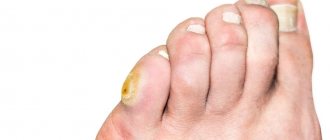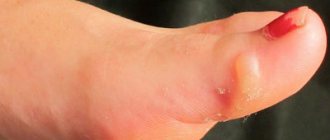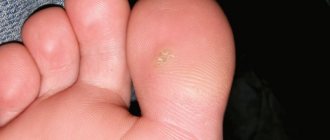Causes of subungual callus appearance
The main reason for the appearance of calluses under the nail is uncomfortable shoes that either do not match the size or do not meet quality requirements, for example, they are made of artificial material, there are deviations in orthopedic characteristics, or the seams are not properly processed. There may be features of the model, in particular, a too narrow nose, which can also lead to additional stress on the fingers.
Symptoms of subungual callus
In addition to wearing uncomfortable or poor-quality shoes, the following phenomena can affect the formation of subungual callus:
Deformation of the foot , leading to “bulging” of the bone in the area of the big toe. This may be a hereditary pathology or acquired as a result of injury;
Improper hygiene . The nail plate may be too short, which causes chafing of unprotected soft tissues. The opposite situation, when the nail is long, also increases the risk of callus formation, since the plate additionally puts pressure on individual areas of the fingers.
Regardless of the reasons for the appearance of a subungual callus, if it is detected, the provoking factor should be excluded and treatment should begin. The sooner an area characterized by the formation of keratinized epithelium is detected, the easier it is to choose an effective method of treating the callus.
Description
A subungual callus is a round formation that is located under the nail plate. As a result of the influence of various factors, the stratum corneum of the skin under the nail is separated and the resulting space is filled with serous fluid. It begins to put pressure on the finger and cause discomfort.
The main sign of a subungual callus is pain and discomfort in the nail area. As the pathology progresses, the periosteum of the phalanx of the finger may be affected, resulting in unbearable pain. In some cases, if the capillaries are damaged, severe bleeding may occur, requiring immediate medical intervention.
How does a nail callus appear?
It is quite difficult not to notice a callus under the nail, as it causes significant discomfort. If at first there is a tolerable feeling of discomfort, then over time, especially if the reason is tight shoes, but wearing them does not stop, unbearable pain appears.
A nail callus does not always appear immediately under the plate; it can form near the nail area and then move under it. Initially, a detachment of the skin is formed; subsequently, an increase in keratinized epithelium may be observed.
Clinical treatment
Surgery remains an effective way to treat calluses and get rid of them. There are no incisions or lying under a lamp, the manipulation is quick and painless. To remove a callus, it is not necessary to make an appointment with a doctor or undergo a full course of treatment - just go to a beauty salon for the procedure.
Removal of subungual formation
The procedure goes as follows:
- A professional (surgeon or cosmetologist) measures the size of the callus, outlines the formation, and makes a conclusion regarding the nature of the removal and the amount of work.
- A small hole is drilled at the site of the callus.
- The doctor takes a smaller drill and pierces the stratum corneum of the skin. Here the patient will have to feel a little pain, no more than a standard injection. It is mandatory to talk about pain; based on the patient’s sensations, the doctor gets an idea of reaching the desired point.
- When the patient has told about the feelings that have arisen, the master begins the main work: he pours a toxic liquid into the hole, which completely corrodes the callus, then removes it.
- Later the overgrowth of soft tissues begins. Once the process is over, the procedure cannot be considered complete until the doctor makes a nail prosthesis. Material used: fiberglass, silk, acrylic and gel.
Don’t worry about pain: in good salons and clinics the procedure is performed under anesthesia. If the callus returns, requiring a second fight, there is only one way out: it will have to be removed. In selected cases, when the foot is deformed (flat feet begin or a bone protrudes), the doctor even removes the lateral bone next to the toe - if the bone is the cause of what is happening. If the source is repeatedly uncomfortable shoes, recommendation: make a choice in favor of healthy nails rather than harmful shoes.
Advanced clinics and salons use a new technique: removal using a diamond bur. In this case, the doctor does not need to install a prosthesis; the nail lifts on its own, and drilling occurs from the reverse side.
Do not try to perform such an operation yourself! If you touch the callus incorrectly, it is possible to damage the blood vessels, causing irreparable harm. If the instruments are not treated with a special solution, there is a high probability of infection.
How to treat subungual callus
There are several ways to get rid of an unpleasant formation - contact a specialist at the clinic or try to cope with the problem at home. Usually, you first try to remove the callus yourself, but this method is only suitable for minor damage and does not guarantee a positive result. In advanced stages or to receive clearly effective treatment, it is recommended to contact the appropriate institutions.
The process of removing subungual callus
Clinical treatment of callus
Getting rid of education in a clinic or a special beauty salon involves surgical intervention, which is not a complex manipulation, but requires exceptional sterility and a certain amount of specialist experience.
If we consider the procedure for treating or removing a subungual callus step by step, it looks like this:
- Visual inspection of the damaged area in order to determine the exact location of the formation and the condition of the surrounding tissues. Designation of boundaries for more precise further manipulations;
- Using special tools, a small hole is formed in the nail plate at the site of the developing callus;
- Determination of the depth of the lesion. To do this, the doctor pierces the stratum corneum until the patient feels discomfort. They are not very painful, some compare them to a needle prick;
- The use of a special solution, which is poured into the resulting nail hole. The keratinized epithelium is softened and removed;
- Treatment with an antiseptic drug and further waiting for the healing of soft tissues;
- After tightening the treated area, the plate is augmented or prosthetized.
The procedure can be performed under local anesthesia if the patient requires it or the subungual callus is observed in an advanced stage.
Home therapy
Subungual callus can be treated independently using pharmaceutical remedies or traditional methods. It is not so easy to radically get rid of it, given that there is a barrier in the form of a nail. But with home therapy you can relieve unpleasant symptoms.
Pharmacy drugs
The pharmaceutical industry offers many creams based on herbal ingredients that soften, soothe the skin of the feet and help reduce pain.
To relieve pain, you can use the drug Collomac. The product should be applied twice a day strictly to the affected nail. The medicine should not touch healthy tissue - it can cause a burn. Contraindicated for use in the treatment of the following groups of patients:
- children under 1 year old,
- people with kidney diseases,
- having hypersensitivity to the drug.
Special callus plasters are also used. They are effective in treating exposed areas of rough skin, but are not able to treat damage under the nail plate.
If they come into contact with healthy skin, surrounding tissues can cause irritation, so many doctors do not recommend the use of patches for this type of callus.
Folk remedies
At home, hot or cold baths are used to alleviate the condition:
- Dissolve 3 teaspoons of baking soda and 1 teaspoon of soap in 3 liters of hot water. The feet are placed in the liquid for 30 minutes. After this, the nail softens and the painful symptoms subside.
- Dissolve 1 tablespoon of salt in 1 liter of warm water. Place your foot in the bath for 30 minutes. The product helps eliminate pain, burning, and swelling in the finger. After the procedure, the skin should be moisturized with cream.
- Add the juice of 1 lemon to 3 liters of hot water. Place your feet in the bath for 20-30 minutes. After the procedure, you can additionally apply lemon juice to the nail plate and lubricate it with moisturizer.
Various compresses and oils are also popular among home medicine:
- Place a slice of raw potato on your nail, wrap it in film and leave overnight. The root vegetable softens the plate well and temporarily relieves unpleasant symptoms.
- Flaxseed, olive, corn, castor oil have a positive effect: they soften the skin. You need to apply a couple of drops to the nail plate and wrap it in film overnight. For the best effect, the procedure should be carried out every day .
- Cut a fresh onion and apply it to the nail, seal tightly and leave overnight. In the morning, rinse with water.
Treatment at home
You can try to remove the callus yourself at the initial stage of formation, without going to the clinic. To do this, you can use special medications or experiment with traditional recipes, which in some cases has a positive effect.
Remedies for subungual calluses
There are various ointments and drops, as well as patches soaked in special solutions that will help remove the formation. They contain acids or other active components that can dissolve keratinized tissue and soften them, which facilitates further removal of the callus.
The most common are Collomac, and you can also use Duofilm, Solcoderm, Salicylic ointment, Salipod patches, and so on. To avoid negative consequences, preliminary consultation with a specialist is recommended. Before application, it is important to read the instructions and contraindications.
Traditional medicine against calluses under the nail
For many people, going to see a doctor with a corn when the situation is not yet critical is not accepted and traditional medicine recipes are used to help. They consist of softening the plate, removing it (this can be done with pumice), as well as further processing of the callus itself. Among the most popular are:
Soda baths . The effect is more soothing, since there is no main treatment, but due to the softening of the plates in hot water and exposure to soda, it relieves inflammation and partially removes keratinized particles. After the procedure with soda, it is advisable to apply a deeper penetration agent, for example, medicinal ointment, drops;
Aloe leaf , cut and attached to the sore finger overnight. Application is recommended for several days, but after the nail softens, additional treatment of the problem area will be required to remove skin peelings;
Herbal bath . For a liter of water, take 40 grams of chamomile and 20 grams of string. The infusion should be hot for better steaming of the nail and its subsequent removal;
Soda, laundry soap, chamomile . The mixture is prepared for one liter 2 tbsp. spoons of soda, the same amount of dry chamomile and one large spoon of crushed soap. Soak your foot in the hottest possible water and carefully remove the layers of softened nail.
It is not always possible to remove a subungual callus on your own efficiently and without consequences; there is a risk of infection and other complications.
Pharmacy products
To eliminate pain, you can use the pharmaceutical drug "Collomac" . It contains salicylic acid, which effectively softens dead skin. It is enough to drop 10 ml 1-2 times a day. medicine on the callus area, and after 4 days the skin will soften. But it must be used carefully: the composition should not come into contact with living skin.
Doctors do not recommend using anti-corn patches. The acid they contain corrodes not only the keratinized area of the skin, but also living tissue.
Prevention
You can prevent the appearance of a subungual callus and its subsequent unpleasant treatment with simple preventive measures. They include the following rules:
- Shoes should be comfortable; there is no need to wear them in at the expense of the health of your feet. You need to initially select shoes that are the right size, comfortable to wear, and made from quality materials. In extreme cases, use special wear-in products, silicone pads on the finger on which increased pressure is applied;
- Proper nail care. If possible, you can visit beauty salons for a professional pedicure; nails should be trimmed carefully, repeating the natural shape of the plate, to prevent ingrown nails;
- Timely removal of keratinized parts of the skin, use of pumice, moisturizing creams, preventive baths with beneficial herbs or ready-made solutions.
It is easier to prevent the formation of a subungual callus than to later get rid of the growth. If, nevertheless, such a problem appears, then it is necessary to take treatment measures without delay, so as not to worsen the situation and not carry out serious surgical intervention in the future.
Causes
The reason for the formation of subungual calluses is most often due to increased pressure on the foot in the toes. Risk factors for the development of this surgical pathology include:
- Wearing tight shoes
- Improper care of the nail plate,
- Deformation of the toenail.
All these factors lead to increased pressure on the foot. Nail calluses often develop on the little finger and thumb. This is due to the fact that the shoes may be narrower. The risk of the disease is increased in people who prefer to wear flattened shoes. Pressure on the nail increases if the shoe size does not match the size of the foot. More often, the distal parts of the fingers are compressed by the seams from narrow shoes and ballet shoes.
Another cause of pathology is deformation of the distal toes. Curvature of the nail can be congenital or acquired. Abnormal growth and excessive compaction of tissue is often observed in older people. Fungal infections of the nails and wearing uncomfortable shoes for a long time lead to deformation. Subungual calluses cause discomfort due to the pathological growth of the stratum corneum of the epidermis.
Improper care of the nail plate is one of the main reasons for the development of keratinization. The thickening of the stratum corneum of the epidermis occurs due to increased pressure. The nail itself can compress the tissue. This happens if you trim its edge incorrectly. Both excessive growth and short cutting of nails can cause calluses.
Due to constant pressure, the tissue not only becomes denser, but also bulges outward. Unbearable pain is observed in cases where it penetrates into the deep layers of the skin. In this case, you cannot get rid of the problem on your own, so surgical help is required.
How to warn?
Unlike the congenital form of the disease, the acquired form can be prevented. After all, deformation is often provoked by sloppiness, improper care, and inattentive selection of shoes.
What to do to reduce risks?
- be careful to prevent accidental injury;
- carefully choose shoes so that they fit in size and do not squeeze the foot anywhere;
- wear corrective orthopedic insoles, orthoses, shoes if you have flat feet or toe deformities (valgus, varus, hammertoe);
- take care of the prevention of fungal infections;
- control the course of chronic diseases that can lead to disruption of the supply of nutrients and oxygen to the tissues of the nail apparatus;
- undergo regular examinations by a podologist, perform hardware medical pedicures for early detection of the disease;
- provide adequate nutrition;
- trim toenails only at right angles and not in a semicircle;
- carefully perform manicure and pedicure.
In the case of a congenital form, constant observation and treatment of the affected nails by a specialist are required. This helps improve their appearance, avoid complications, and minimize discomfort and pain.
Remember that any problems with nails and feet are best dealt with at an early stage. This will give you a better chance of quick, successful treatment. If you notice any irregularities or strange changes, immediately go to the podiatrist. Timely contact with a specialist for onychogryphosis will allow you to preserve the nail plates and avoid their complete removal.
podology of onychogryphosis
Surgical methods
If the callus under the toenail has fully formed, the only solution is surgery. It can be carried out not only in a clinic, but also in a beauty salon. However, if the callus is large and the pain is severe, it is better to consult a surgeon.
The operation is carried out as follows:
- local anesthesia using an anesthetic that is injected into the surgical site;
- measuring the painful area to accurately determine its boundaries;
- drilling through keratinized tissue and injecting a solution into the resulting hole to corrode the seal.
The healing process is observed by specialists in order to notice the onset of possible inflammation in time. After complete tissue regeneration, nail plate prosthetics is performed.
Sometimes it is possible to save the nail. Drilling is carried out with a diamond drill, the nail is carefully moved back and placed on a space that is clear of calluses. This method of treatment is still rarely used and requires the skill of a specialist.


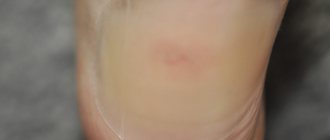
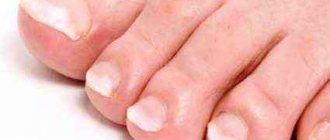
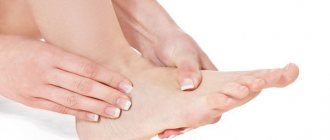

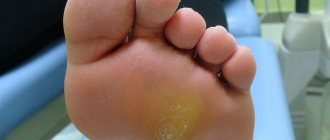

![Closed comedones on the skin of the face [causes and how to get rid of them]](https://2015brend.ru/wp-content/uploads/zakrytye-komedony-na-kozhe-lica-prichiny-i-kak-izbavitsya-330x140.jpg)
